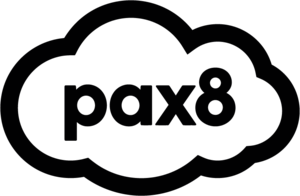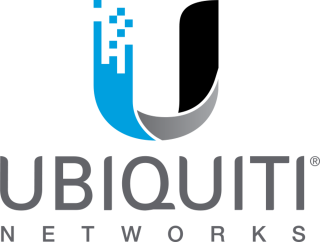In today’s data-driven landscape, the ability to efficiently manage and leverage data is crucial for any business aiming for success. Enter Microsoft Fabric, a cutting-edge platform designed to transform isolated data silos into a cohesive, enterprise-wide system of intelligence. By harnessing the power of data engineering, Microsoft Fabric represents a significant leap towards achieving seamless integration and insight across various data sources. The importance of integrating disparate data systems cannot be understated, as it paves the way for enhanced decision-making, improved operational efficiency, and a more personalized customer experience.
This article will delve into the critical role of Microsoft Fabric in breaking down data silos, utilizing tools such as Power BI, Azure Data Factory, and Apache Spark to facilitate comprehensive data analysis and management. You will explore the key features of Microsoft Fabric, understand how it enhances data engineering practices, and discover the tangible benefits it brings to organizations. From theoretical concepts to real-world applications, the discussion will equip you with a thorough understanding of how MicrosoftP Fabric can empower your business to achieve new heights of enterprise synergy.
Understanding Data Silos and Their Impact
Definition of Data Silos
Data silos, or information silos, represent a significant challenge within many organizations, often becoming the default system despite their negative impacts. By definition, a “silo” is a structure used to store large quantities of materials like grain, which are kept separate from one another. Similarly, in a corporate environment, a data silo refers to data that is isolated and confined within one part of an organization. This isolation can include various types of information such as documents, media, metrics, and customer records, which are not readily accessible or searchable across different departments.
Consequences for Enterprises
The presence of data silos in an organization leads to a myriad of operational challenges and inefficiencies. First and foremost, data silos significantly slow down productivity. Employees often find themselves wasting time in manual data collection or waiting for data access from colleagues, which disrupts workflow and leads to inefficiencies. According to a report by Panopto, this waiting and duplicative work costs businesses approximately 5.3 hours per employee each week.
Moreover, data silos contribute to unnecessary consumption of storage space, often housing duplicated, outdated, or irrelevant data, thus inflating costs and reducing operational efficiency. The financial impact is substantial, with lost productivity due to inefficient data management estimated to cost U.S. businesses around $1.8 trillion annually.
On a broader scale, data silos obstruct the flow of information, leading to poor data quality and inconsistency. This fragmentation hampers decision-making processes and can lead to biased or incomplete insights, severely affecting strategic planning and execution. Additionally, the lack of a unified data governance framework increases security and compliance risks, exposing organizations to potential data breaches and losses.
In essence, data silos not only hinder day-to-day operations but also impede the overall strategic and competitive positioning of businesses. The integration and accessibility of data across departments are crucial for fostering a collaborative, efficient, and data-driven organizational culture.
What is Microsoft Fabric?
Basic Overview
Microsoft Fabric is an end-to-end analytics and data platform tailored for enterprises that need a unified solution to manage their data landscape. It streamlines the process of data movement, processing, ingestion, transformation, and real-time event routing, all while providing robust tools for report building. Operating on a Software as a Service (SaaS) model, Microsoft Fabric integrates various data management services under one roof, making it easier for businesses to convert raw data into actionable insights without the need to juggle multiple vendors.
Components of Microsoft Fabric
Microsoft Fabric is composed of several key components that work together to provide a comprehensive data and analytics experience:
- Power BI: This tool allows users to connect to their data sources, visualize data, and share insights across the organization, enhancing decision-making processes.
- Azure Data Factory: Known for its modern data integration capabilities, it includes more than 200 native connectors that help in data ingestion and transformation for both on-premises and cloud data sources.
- Data Activator: A no-code feature within Fabric that triggers actions like email notifications or workflows when specific data patterns are detected.
- Industry Solutions: Tailored data management and analytics solutions that address the unique challenges of various industries.
- Real-Time Intelligence: Supports event-driven scenarios by managing data ingestion, transformation, and analysis, facilitating immediate insights and actions.
- Synapse Data Engineering and Data Science: These components are crucial for handling large-scale data infrastructures and building, deploying, and managing machine learning models directly from within the platform.
- Synapse Data Warehouse: Offers high-performance SQL processing and is capable of scaling compute and storage independently, optimizing resources and cost.
Each of these components is designed to integrate seamlessly, providing a smooth experience that caters to different business needs and user roles within the organization. Together, they form a robust framework that not only simplifies data management but also enhances the analytical capabilities of enterprises.
Key Features of Microsoft Fabric
Microsoft Fabric stands out as a comprehensive end-to-end analytics and data platform tailored for enterprises that require a unified approach to managing their data landscape. This platform integrates a variety of components into a cohesive system, significantly simplifying the analytics and data management processes.
Unified Data Platform
At its core, Microsoft Fabric provides a unified data platform that encompasses essential services such as Data Engineering, Data Factory, Data Science, Real-Time Analytics, Data Warehouse, and Databases. This integration allows you to avoid the complexity of assembling different services from multiple vendors. Instead, Fabric offers a seamlessly integrated, user-friendly platform that simplifies your analytics requirements. With OneLake, you can centralize data storage, ensuring that AI capabilities are embedded within the platform, eliminating the need for manual integration. This centralization enables you to transition raw data into actionable insights efficiently, fostering a data-driven decision-making process across your enterprise.
Advanced Analytics and AI Capabilities
Microsoft Fabric enhances its platform with advanced analytics and artificial intelligence capabilities, making it a powerhouse for enterprise data management. The Real-Time hub within Fabric provides a unified SaaS experience, allowing you to manage and react upon data-in-motion from a diverse range of sources. This hub not only facilitates the discovery and management of data streams but also integrates with Microsoft sources like Azure Event Hubs and Azure IoT Hub, among others.
Furthermore, the integration of Azure OpenAI Service across all layers of Fabric empowers you to unlock the full potential of your data. This includes the ability to use conversational language for creating dataflows, writing SQL statements, or building machine learning models through Copilot in Microsoft Fabric. These features are designed to fuel tailor-made generative AI experiences in Azure AI Studio, seamlessly flowing curated data from Fabric, thus enhancing your analytical capabilities and enabling quick, informed decision-making across various business functions.
How Microsoft Fabric Breaks Down Data Silos
Seamless Data Integration
Microsoft Fabric effectively dismantles data silos by integrating separate components into a cohesive stack. With OneLake, you can centralize data storage, eliminating the need for multiple databases or data warehouses. This integration streamlines data and services, enabling unified management, governance, and discovery. It ensures robust security for items, data, and row-level access, where permissions are automatically applied across all underlying services. Additionally, data sensitivity labels are inherited automatically across the suite, enhancing security and compliance.
OneLake addresses the common issue of data silos created by individual developers who often set up isolated storage accounts. Instead, it provides a single, unified storage system accessible to all developers, promoting easy data discovery, sharing, and uniform enforcement of policy and security settings. This centralization simplifies the management of data sources and reduces complexities associated with data handling.
Centralization of Data Sources
By prewiring all Microsoft Fabric compute experiences to OneLake—similar to how Office applications are prewired to use organizational OneDrive—Microsoft Fabric ensures that tools like Data Engineering, Data Warehouse, Data Factory, Power BI, and Real-Time Intelligence use OneLake as their native store. This integration requires no additional configuration, making it easier for you to manage and analyze data.
Shortcuts within Microsoft Fabric allow for effortless sharing of data between users and applications without the need to move or duplicate information. You can create shortcuts to other storage systems, enabling the composition and analysis of data across clouds with transparent, intelligent caching. This not only reduces egress costs but also brings data closer to compute, streamlining the process of data utilization across various platforms.
Through these mechanisms, Microsoft Fabric provides a comprehensive solution to break down data silos, fostering a more connected and efficient data management environment within your organization.
Benefits of Implementing Microsoft Fabric
Enhanced Decision Making
Implementing Microsoft Fabric significantly improves decision-making capabilities within your organization. By leveraging advanced analytics and artificial intelligence, Microsoft Fabric enables you to derive actionable insights from vast amounts of data. Tools like Azure Synapse Analytics and Power BI facilitate deep data analysis, helping you understand complex patterns and trends. This enhanced insight supports better strategic decisions, directly impacting your bottom line with reported increases in profits up to $3.6 million.
Operational Efficiency
Microsoft Fabric boosts operational efficiency by optimizing data engineering processes. The platform reduces the time data engineers spend on tasks like searching, integrating, and debugging by 90%, translating to a productivity increase of 25%. This improvement not only speeds up operations but also contributes to significant cost savings, estimated at $1.8 million for composite organizations. Additionally, business analysts benefit from 20% improved access and output, further enhancing operational workflows and efficiency.
Cost Savings
One of the most compelling advantages of Microsoft Fabric is its ability to generate substantial cost savings. By eliminating outdated infrastructure and consolidating technologies, your organization can save up to $779,000 over three years. The platform’s seamless integration with existing systems and applications reduces the need for multiple databases or data warehouses, streamlining your IT landscape. Moreover, the pay-as-you-go model of Microsoft Fabric ensures that you only pay for the resources you use, optimizing budget allocation and reducing unnecessary expenditures.
Real-World Applications of Microsoft Fabric
Case Studies
One compelling example of Microsoft Fabric’s effectiveness is seen in Wipfli’s strategic implementations. By developing a strategic data foundation roadmap tailored to their customer’s needs, Wipfli leveraged Microsoft Fabric to simplify, unify, and accelerate digital transformation. This integration not only streamlined Azure toolset utilization but also significantly cut implementation costs by bundling essential tools into one comprehensive platform. Notably, this approach sped up delivery times by approximately 20%, showcasing a significant improvement in efficiency and a reduction in data engineering complexities.
Another impactful case is a global investment firm that utilized Microsoft Fabric to consolidate their diverse data silos. This consolidation led to a unified view of data across the firm, resulting in a 50% decrease in cloud expenditures and a 35% reduction in manpower required, demonstrating the platform’s capacity to enhance operational efficiency and reduce costs substantially.
Success Stories
Microsoft Fabric has reshaped how organizations manage and analyze data. For instance, the integration of Microsoft Fabric at a healthcare consulting firm, Kepro, enhanced the efficiency of extracting crucial information from extensive case histories. By centralizing data into OneLake and utilizing Azure Synapse Analytics, the firm improved healthcare data management, reduced duplication, and lowered storage costs.
In the insurance sector, Influential utilized Power BI, enhanced by Microsoft Fabric, to streamline claims management and improve risk assessment. This integration provided valuable customer insights and boosted operational efficiency, showcasing Fabric’s ability to enhance existing systems and processes.
Moreover, Microsoft Fabric’s role in non-profit organizations like Junior Achievement exemplifies its accessibility and value. By providing an affordable path for integrating robust data management tools, Microsoft Fabric enables these organizations to harness advanced data science and real-time analytics capabilities, delivering substantial value for the investment.
Through these real-world applications, Microsoft Fabric demonstrates its versatility and effectiveness across various industries, driving innovation, efficiency, and growth.
Conclusion
Throughout this exploration, we’ve delved into the transformative power of Microsoft Fabric in breaking down data silos and fostering a unified and efficient management of enterprise data. By integrating disparate components into a cohesive data management and analytics platform, Microsoft Fabric stands as a cornerstone for businesses aiming to navigate the complexities of today’s data-driven landscape. The platform’s ability to streamline operations, enhance decision-making, and optimize cost efficiencies illustrates a significant step forward in realizing the full potential of enterprise data synergy.
The broader implications of Microsoft Fabric’s capabilities are profound, offering not just operational improvements but also paving the way for innovative data utilization strategies. As organizations look to the future, the adaptability and comprehensive analytics offered by Microsoft Fabric represent key assets in achieving competitive advantage and operational excellence. Embracing such a platform opens avenues for further exploration and expansion, underscoring the vital role of unified data platforms in the digital transformation journey of businesses across various sectors.
FAQs
- What is the purpose of Microsoft Fabric?
Microsoft Fabric is designed to help organizations and individuals transform large and complex data repositories into actionable workloads and analytics. It utilizes a data mesh architecture to facilitate these processes. - What issues does Microsoft Fabric address?
Microsoft Fabric addresses the complexity of managing multiple technologies by integrating tools like Power BI, Azure Synapse, and Azure Data Factory into a unified environment. This integration simplifies the process for developers to organize and manage data streams from a singular viewpoint, eliminating the need to individually set up and coordinate various tools. - Which Microsoft Fabric workloads are utilized for data movement and transformation?
Microsoft Fabric includes specific workloads that orchestrate and automate the movement and transformation of data from various sources to destinations for purposes such as analytics and reporting. Among the available workloads, Data Factory is specifically used for moving and transforming data. - What is a major advantage of using Microsoft Fabric in data projects?
A significant advantage of using Microsoft Fabric in data projects is its ability to provide a single, integrated environment where data professionals and business teams can collaborate effectively. This integrated approach enhances the efficiency and coherence of data projects.





